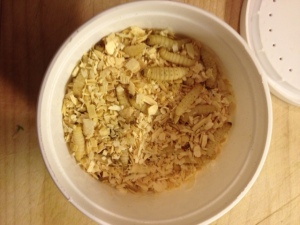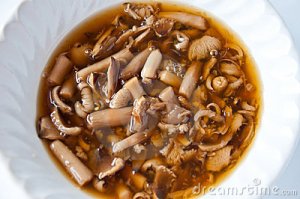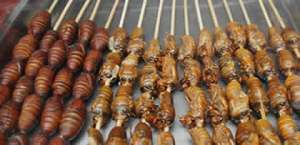A few weeks ago, I went onstage at the High Noon Saloon to deliver an Ignite presentation (20 slides in 5 minutes) on the theme of “Attainable Sustainable.” I spoke very quickly about how I overcome my aversion to eating a very attainable and sustainable (but not commonly appreciated) food…
I think it turned out pretty well. I had a lot to cram in there, and there was way more left out than put in. I’ve been writing a lot about entomophagy recently. (My first draft was over an hour long.)
Also, my last slide (slide #20) did not make it. In the moment, I panicked thinking I miscounted my slides, so I ended abruptly. But I didn’t miscount. My slides were cut short due to a technical issue with the computer.
So in the spirit of a Quantum-Leap/Back-To-The-Future-type ambition to put right what once went wrong, I will go through how I would have wanted it to end.
…Now I encourage you all to take your own journeys. Because eating bugs is not so weird, most of the world already does it. And it’s sustainable and paleo, and kosher, and gluten free, and no more grosser than many things we eat now.
And there are now bars with cricket protein, and a cricket flour you can bake with, and resources with the Eat-a-Bug Cookbook and Daniella Martin’s Edible.
It’s just a matter over that cultural aversion. As with a lot of things we wouldn’t normally do–like karaoke, giving an Ignite presentations–a little alcohol helps
I wanted to conclude by making clear that there are way more palatable edible insect foods out there now than what I made with my own cooking, like energy bars from Exo and Chapul, savory snacks from Don Bugito, candies from Hotlix, and cool flour and baked goods from Bitty Foods.
Many thanks to the folks at Ignite and Sustain Dane for putting together such a cool night of folks talking sustainability from a variety of fun and unique angles. Check them all out here.
And also thanks to Cheri Schweitzer, top-notch Madison restaurant consultant of Credible Consulting, food safety expert, and instructor for WWBIC’s very worthwhile “Business Planning for Your Food Business,” who recommended I try to do this thing.



















































